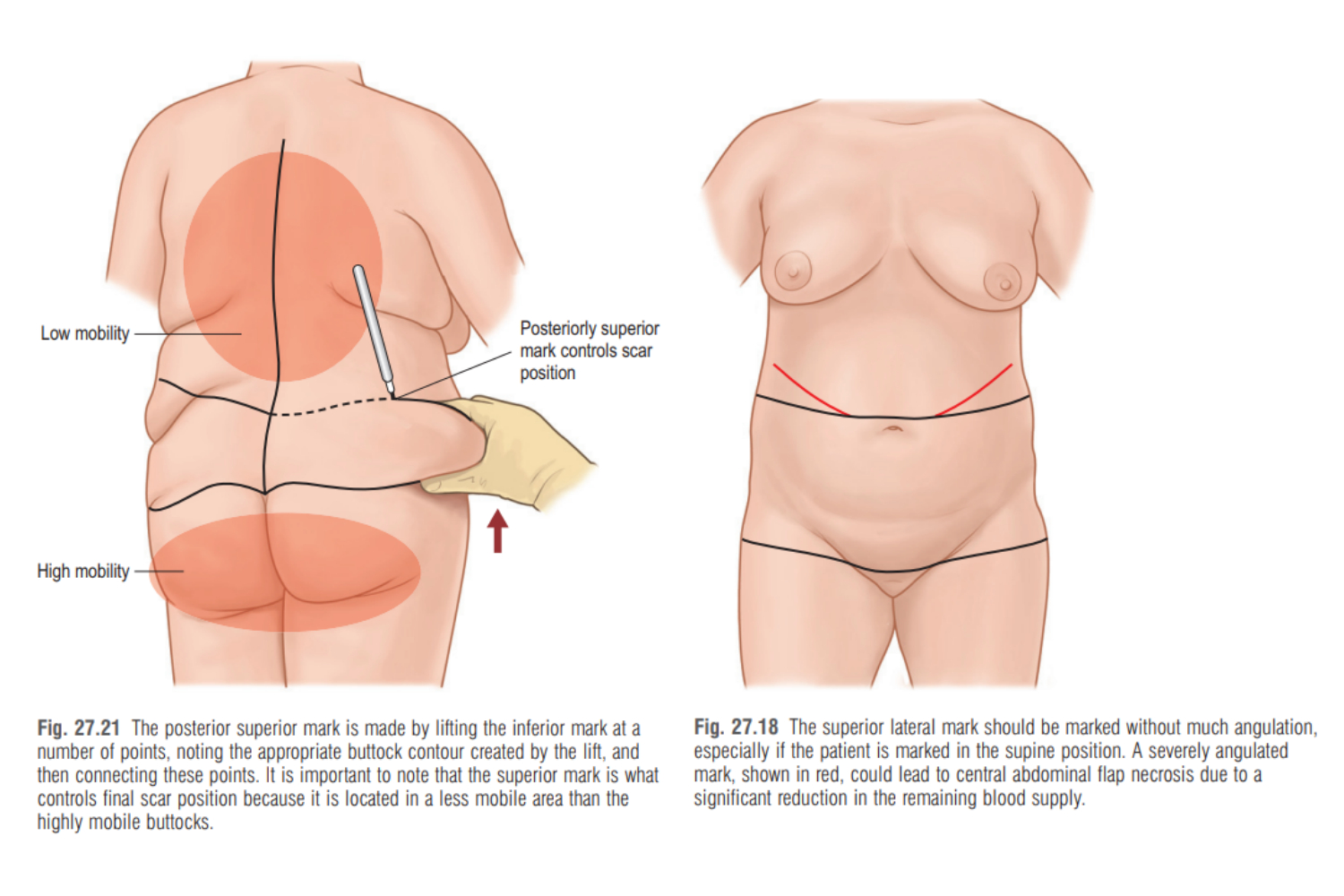Patient Stories
Post Massive Weight Loss Body Contouring
A 40-year-old lady consulted with Dr Pek with the desire to correct large amounts of excess skin and soft tissue. She had undergone Bariatric Surgery (Sleeve Gastrectomy) 2 years prior to her presentation and had successfully lost almost 30kg of weight. With the successful weight loss, she was left with a large amount of flabby and loose skin, which did not go away. These excess skin flaps were symptomatic, as they would occasionally cause abrasions, especially when she exercised. Additionally, during the more humid times of the year, she would develop heat rashes or secondary infections of these rashes, as it was challenging to maintain hygiene in these skin folds. The sheer weight of the excess, droopy skin also caused a strain on her back and neck, causing her to have an abnormal posture. She had maintained a stable weight for 9 months prior and had adopted a stable diet and exercise regime.

Source: Plastic Surgery – Neligan (3rd Edition). Section II, Chapter 27.
A focused examination of the abdominal region revealed the patient had a significant abdominal pannus (excess skin fold at the lower part of the abdomen) which extended towards the flanks and back. There was some hyperpigmentation and excoriations of the skin fold of that region as well. There was also presence of lipodystrophy (stubborn fat deposits) over her flanks, extending towards the back. There were no abdominal masses or hernias detected. At the same time, the patient also displayed other typical signs of a post-massive weight loss patient in the breast, arms and thigh regions as well.
Given her clinical findings, the patient was suitable for a truncal body contouring procedure called belt lipectomy. Belt lipectomy involves circumferentially removing all excess skin and fat tissue, in a “belt-like distribution”, hence the procedure's name. This procedure most effectively helps to improve the trunk holistically. Some of the benefits of this procedure are:
1. Elimination of the panniculus/flattening of the abdomen.
2. Elimination of mons pubis ptosis and redundancy.
3. Creation of waist definition (usually a desire in females).
4. Lifting the anterior and lateral thighs.
5. Elimination of lower back rolls, and in some patients mid back rolls.
6. Lifting the buttocks.
7. Creation of better buttocks contour
After a detailed discussion with Dr Pek, the patient was agreeable to the belt lipectomy procedure. She felt that this procedure would most effectively resolve her symptoms and improve her body contour. In addition, Dr Pek emphasized the importance of maintaining her good diet and exercise regime after surgery to enjoy her improved body contour thereafter.

Source: Plastic Surgery – Neligan (3rd Edition). Section II, Chapter 27.
On the day of surgery, surgical markings were made with the patient standing up, to confirm the areas of treatment. Surgery started off with the patient in a prone position (lying face down), where marked areas on the back and flanks were removed. The buttocks would be lifted to a better position, and the back rolls could be more effectively flattened. Once closure was achieved in the back area, the patient was turned to a supine position (lying face up), where the excess skin and soft tissue was removed. At the same time, repair of diastasis recti (separation of the abdominal muscles) would be performed. This step involves the repair of the core muscles to the midline, and this helps to realign and effectively strengthen these muscles. The belly button would be re-fashioned in the original position (umbilicoplasty), and all wounds would be meticulously closed in layers, after insertion of surgical drains.
After surgery, detailed aftercare instructions were given to the patient to aid her recovery. The patient was able to get out of the bed and walk on her own the day after surgery, with minimal assistance. Post-operative pain was well controlled with oral painkillers. The wounds typically would heal in one to two weeks, and surgical drains were removed once drainage was minimal. Surgical swelling and bruising slowly faded by 2-3 weeks, as the patient gradually returned to her normal activities of daily living. Scar treatment commenced from the second month onwards, as the patient also resumed her regular exercise regime.
The patient was highly satisfied with the surgery, as it had corrected the symptoms she suffered and improved her body contour, which boosted her confidence as well. She quickly looked forward to her subsequent surgeries to improve her arms and breasts in a similar fashion as well.
Surgeon: Dr Pek Chong Han
Contact Form
1 Orchard Boulevard #10-08 Camden Medical Centre, Singapore 248649
6 Napier Rd, #08-01 Gleneagles Medical Center, Singapore 258499
Tel: +65 6737 4565 | Mobile: +65 8828 4565 | Email: clinic@polarisplasticsurgery.com | Business Hours: Mon - Fri: 9am - 6pm | Sat: 9am - 1pm | Sun/Ph: Closed











